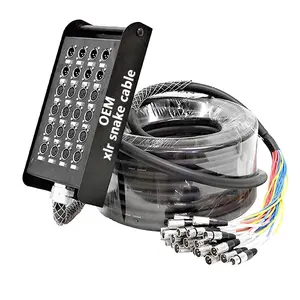Popular in your industry
































































Related Searches:












































































 Ready to Ship
Ready to Ship






 Ready to Ship
Ready to Ship


















































Top categories
About cinema camera
A cinema camera is a professional video camera that captures high-quality footage for film production. It is designed to provide superior image quality, dynamic range, and color accuracy required for cinematic applications. Cinema cameras often have larger sensors compared to traditional video cameras, allowing for improved depth of field control and low-light performance. Moreover, they offer advanced features such as interchangeable lens systems, high bitrates, and extensive color grading capabilities, empowering filmmakers to achieve their artistic vision.
Key features of cinema cameras
One of the outstanding features is the large sensor size, providing enhanced depth of field control and low-light performance. This improved sensor size is beneficial for achieving a cinematic look by enabling a shallow depth of field. Moreover, FX3 Sony cameras often provide high dynamic range, allowing them to capture details in both shadow and highlight areas. The high dynamic range contributes to the camera's ability to reproduce a wide range of tonal values, creating a more immersive and visually appealing image. Besides, cinema cameras have high bitrates, which refer to the amount of data processed per second. This high bitrate ensures a greater level of detail in the recorded footage, contributing to enhanced image quality. Many cinema cameras offer support for interchangeable lenses, giving filmmakers the flexibility to choose lenses that best suit their creative requirements. The use of interchangeable lenses enables filmmakers to achieve different perspectives, focal lengths, and visual effects. Additionally, cinema cameras often provide extensive color grading options. The ability to manipulate colors in post-production is crucial for achieving a specific aesthetic and visual style. Cinema cameras offer various color profiles and settings that allow filmmakers to customize and fine-tune the color reproduction of their footage.
In the context of cinema cameras, the term "sensor size" refers to the physical dimensions of the image sensor inside the camera. A larger sensor size typically means more light-gathering capability, which can result in improved low-light performance and the ability to achieve a shallower depth of field. The sensor size is an essential consideration when choosing a cinema camera, as it directly impacts the camera's imaging characteristics. For example, a camera with a full-frame sensor, such as the FX3 Sony, will provide a different field of view and depth of field compared to a camera with a smaller sensor, such as a Micro Four Thirds sensor. Filmmakers often select cinema cameras with sensor sizes that align with their creative preferences and the visual effects they aim to achieve.
Advantages of cinema cameras
A significant advantage of cinema cameras is their ability to capture high-quality footage with enhanced dynamic range, color accuracy, and resolution. The large sensor size in cinema cameras allows for better light sensitivity and depth of field control, resulting in visually stunning images. Additionally, cinema cameras provide advanced features and manual controls that enable filmmakers to fine-tune the camera settings to achieve their desired look and style. These cameras often support high-quality recording formats, such as RAW and high bitrates, ensuring maximum flexibility in post-production and maintaining the quality of the footage. The robust build quality of cinema cameras, along with their professional-grade components, makes them durable and reliable tools for demanding film production environments. Furthermore, the compatibility with a wide range of lenses, accessories, and cinematic workflows enhances the versatility and creative possibilities for filmmakers. The FX 3 Sony is a popular choice among professionals for its compact design, full-frame sensor, and advanced video capabilities. As such, it is essential to ensure that the chosen cinema camera aligns with the specific requirements of the intended production, whether it be narrative filmmaking, documentary, commercial, or other cinematic projects.














































